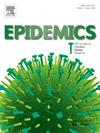The effect of COVID-19 vaccination on change in contact and implications for transmission
IF 2.4
3区 医学
Q2 INFECTIOUS DISEASES
引用次数: 0
Abstract
Background
Monitoring human behavior as epidemic intelligence can critically complement traditional surveillance systems during epidemics. Retrospective analysis of novel behavioral data streams initiated during the COVID-19 pandemic help illustrate their utility. During the pandemic, behavior changed rapidly and was increasingly influenced by individual choice in response to changes such as newly available vaccines. Vaccines provided substantial protection against severe disease and deaths; however, their effect on behavior is understudied and it is unclear if vaccine effects against infection fully offset relaxation of social distancing behaviors.
Methods & results
We analyzed data from a longitudinal cohort sampled from U.S. households that measured contact rates, risk mitigation and COVID-19 vaccination status between August 2020-April 2022. Contact rates universally increased across survey rounds among all sociodemographic groups, but unvaccinated individuals had persistently higher contact rates. Using a multilevel generalized linear mixed effects model, we found that individuals who newly completed a primary vaccine series had an additional increase of 1.93 (95 % CI: 0.27–3.59) contacts compared to individuals who remained unvaccinated. Using observed contact rates to estimate transmission, we found that observed increases in contact rates were not fully offset by vaccine protection against infection, but transmission was still maintained below levels without distancing and vaccination despite clusters of individuals with high contact and no vaccination.
Conclusion
We estimated changes in contact rates following vaccination and inferred the joint effect of changes in vaccination and contacts on population-level transmission, finding that observed increases in contact rates were not fully offset by vaccine effects. Our work highlights the potential utility of ongoing longitudinal monitoring of contact patterns during epidemics.
COVID-19疫苗接种对接触改变的影响及其对传播的影响
作为流行病情报监测人类行为可以在流行病期间对传统监测系统进行重要补充。对COVID-19大流行期间发起的新行为数据流的回顾性分析有助于说明它们的实用性。在大流行期间,行为发生了迅速变化,并越来越多地受到个人选择的影响,以应对诸如新获得的疫苗等变化。疫苗为预防严重疾病和死亡提供了实质性保护;然而,它们对行为的影响尚未得到充分研究,目前尚不清楚疫苗对感染的影响是否完全抵消了放松社交距离行为的影响。方法,我们分析了从美国家庭抽样的纵向队列数据,这些数据测量了2020年8月至2022年4月期间的接触率、风险缓解和COVID-19疫苗接种状况。在所有社会人口群体的调查中,接触率普遍增加,但未接种疫苗的个体接触率持续较高。使用多层次广义线性混合效应模型,我们发现,与未接种疫苗的个体相比,新完成一次疫苗系列的个体接触者增加了1.93(95 % CI: 0.27-3.59)。使用观察到的接触率来估计传播,我们发现观察到的接触率的增加并没有被预防感染的疫苗保护完全抵消,但传播仍然保持在没有保持距离和接种疫苗的水平以下,尽管有高接触和未接种疫苗的个体聚集。结论我们估计了接种疫苗后接触率的变化,并推断了接种疫苗和接触的变化对人群水平传播的共同影响,发现观察到的接触率的增加并没有被疫苗效应完全抵消。我们的工作强调了在流行期间对接触方式进行持续纵向监测的潜在效用。
本文章由计算机程序翻译,如有差异,请以英文原文为准。
求助全文
约1分钟内获得全文
求助全文
来源期刊

Epidemics
INFECTIOUS DISEASES-
CiteScore
6.00
自引率
7.90%
发文量
92
审稿时长
140 days
期刊介绍:
Epidemics publishes papers on infectious disease dynamics in the broadest sense. Its scope covers both within-host dynamics of infectious agents and dynamics at the population level, particularly the interaction between the two. Areas of emphasis include: spread, transmission, persistence, implications and population dynamics of infectious diseases; population and public health as well as policy aspects of control and prevention; dynamics at the individual level; interaction with the environment, ecology and evolution of infectious diseases, as well as population genetics of infectious agents.
 求助内容:
求助内容: 应助结果提醒方式:
应助结果提醒方式:


